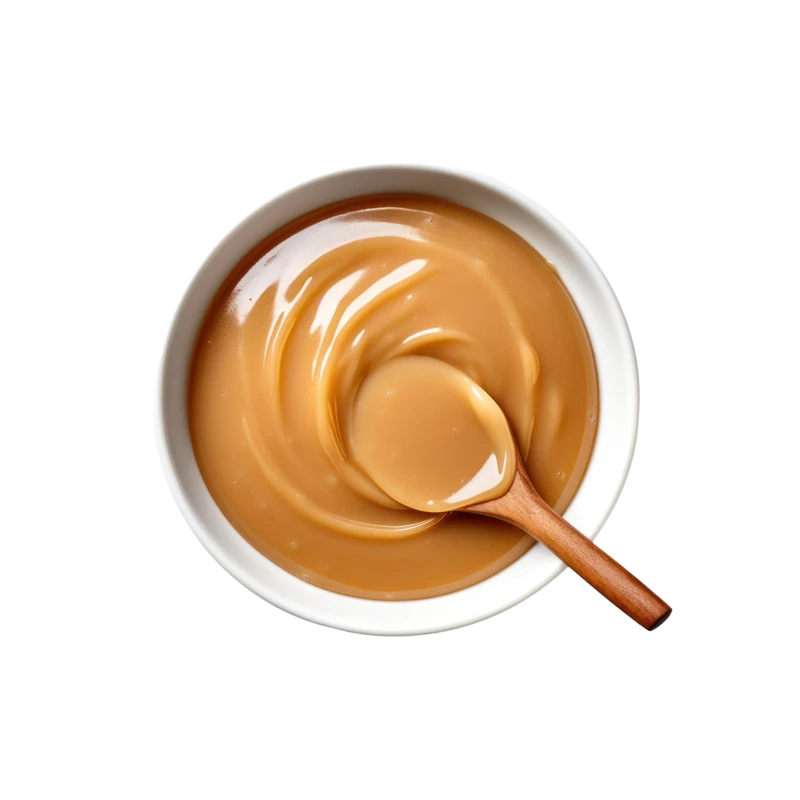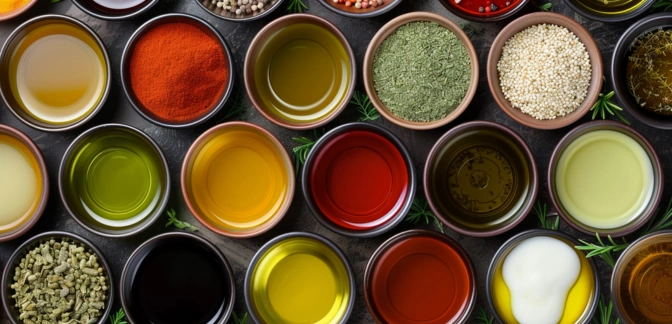Gravy — Nutrients, Health Benefits, And Shopping Tips

Written by Listonic Team
Last update on September 4, 2024
Gravy nutrients
Nutrition facts
Amount per 100 g
Calories
🔥 79 kcal
| Nutrition per: 100 g | Value | % Daily Value* |
|---|---|---|
| Carbs | 12 g | 4.36% |
| Fiber | 1 g | 3.57% |
| Sugars | 1 g | 2% |
| Glycemic Index | 95 | - |
| Protein | 2 g | 4% |
| Sodium | 384 mg | 16.7% |
| Total Fat | 3 g | 3.85% |
*The % of Daily Value (DV) tells you how much a nutrient in a serving of food contributes to a daily diet. 2,000 calories a day is used for general nutrition advice.
3 g
🥕 Low Fat Content
1 g
🍏 Low Sugar Content
Gravy facts & tips
Health benefits
- Enhances flavor in various dishes, making them more enjoyable and palatable.
- Provides some vitamins and minerals such as iron and B vitamins (if made from meat drippings), supporting overall health and well-being.
Health risks
- High sodium content in many commercial gravies, which can contribute to hypertension and increased cardiovascular risks when consumed frequently.
- High fat content particularly in gravies made with meat drippings or butter, which can raise cholesterol levels and increase the risk of heart disease.
- High calorie content which can contribute to weight gain if consumed frequently or in large quantities, particularly as a condiment for calorie-dense meals.
- Potential for artificial additives such as preservatives, flavorings, or thickeners in some commercial gravies, which may cause adverse reactions in sensitive individuals.
How to choose gravy
Gravy should have a smooth consistency and a rich color, whether it is packaged or freshly prepared. The container should be intact and the contents should flow easily when poured, free from lumps.
Avoid gravy that shows signs of separation or has a gelatinous texture, as these can indicate it has been stored improperly or for too long. Packages that are bloated or have leaks should also be avoided, as they might contain spoiled product.

How to store gravy
Gravy should be stored in the refrigerator in an airtight container. Refrigeration keeps it fresh and safe to eat for up to four days. Proper storage ensures it remains flavorful.
Exposure to air can cause gravy to spoil quickly. Avoid leaving it uncovered, and always reheat it thoroughly before serving. Ensuring the container is tightly sealed prevents contamination and maintains its taste.
✅ Extra Tip
How long does it last?
Gravy can last for 3-4 days in the refrigerator once prepared. For longer storage, gravy can be frozen for up to 2-3 months. Proper storage helps maintain its flavor and consistency, ensuring it is always ready to enhance your meals.
What to do with leftovers?
Leftover gravy can be used in a variety of savory and comforting dishes. Use it as a topping for mashed potatoes, roasted meats, or biscuits for added flavor, or mix it into a casserole with vegetables, meat, and cheese. Gravy is also great when added to a pot pie filling with chicken, turkey, or beef.
Use gravy as a base for a shepherd's pie by mixing it with ground meat and vegetables, then topping with mashed potatoes and baking until golden. If you have a lot of gravy, consider freezing it in portions for future use, or making a batch of gravy soup by thinning it with broth and adding vegetables and protein. Gravy can also be added to a stew or chili with beans, vegetables, and spices, or used as a sauce for meatloaf or meatballs. For a quick meal, reheat gravy and serve it over rice, pasta, or potatoes with a side of vegetables.
👨⚕️️ Medical disclaimer
Discover products from other categories
Listonic Team
Fact-checked
Our editorial team checked this article to make sure it was accurate at the time of publishing it.
Get the top-rated shopping list app

gravy
1 piece







